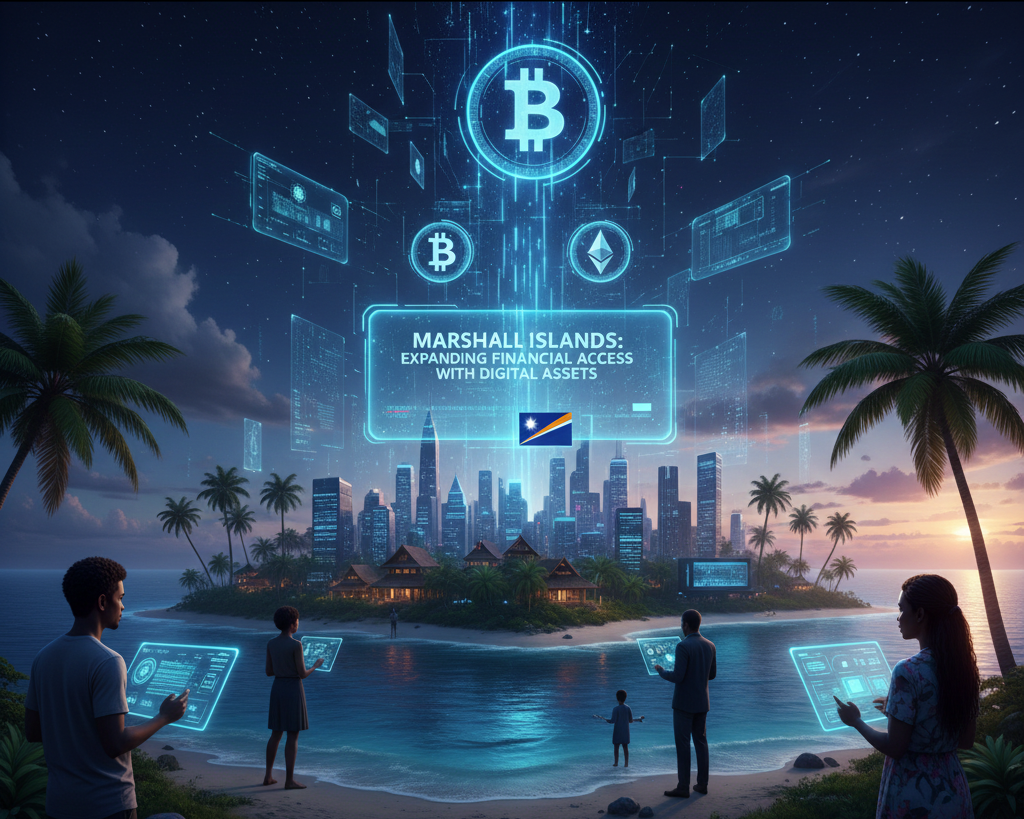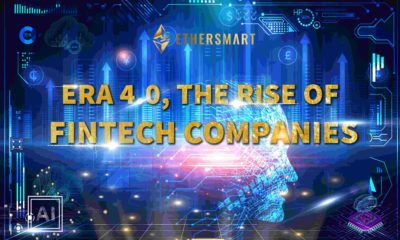Crypto
US IRS Releases Draft of 2025 Digital Asset Reporting Form for US Taxpayers

The Internal Revenue Service (IRS) has taken a major step forward in the evolution of taxation of digital assets by releasing a draft of the 2025 Digital Asset Reporting Form for U.S. taxpayers. This initiative is aimed at enhancing compliance and oversight in the rapidly growing digital asset market.
As cryptocurrencies and other digital assets play increasingly prominent roles in the global economy, this new form will be crucial for both taxpayers and the IRS to ensure accurate reporting and fair taxation.
Overview of the 2025 Digital Asset Reporting Form

Dive into the specifics of the IRS’s newly proposed 2025 Digital Asset Reporting Form, designed to streamline the reporting process for all parties involved in digital asset transactions. We will cover the motivations behind the form, its expected impact, and the key details that taxpayers need to know.
More info here:
https://www.federalregister.gov/d/2023-17565
Key Features of the New Form
The upcoming Digital Asset Reporting Form, the Form 1099-DA, is a response to the increasing integration of digital assets like cryptocurrencies, NFTs, and stablecoins into the mainstream financial ecosystem.
Set to be introduced by the IRS for use in 2025, this form represents a pivotal shift towards standardizing the reporting of digital asset transactions, aligning them more closely with traditional financial reporting mechanisms.
What will be reported on Form 1099-DA?
Form 1099-DA will provide information about the sale or dispose of digital assets. The IRS defines this as cryptocurrencies, NFTs, and stablecoins.
Form 1099-DA will report the same information that is already reported on Form 1099-B for stocks:
- When you received the digital asset (acquisition date)
- How much did you pay for it (cost basis)
- When you sold or swapped it (sale or disposal date)
- How much money you made by selling or swapping it (sales proceeds)
- Gross proceeds (total proceeds from that exchange or broker, without taking cost basis into consideration)
- This will apply to sales made after January 1, 2025, therefore you will receive your first 1099-DA form in January 2026.
Scope and Reporting Requirements:
Under the new regulations, brokers and other intermediaries will be required to report transactions involving digital assets using the Form 1099-DA. This form will capture essential data such as the taxpayer’s name, address, tax identification number, and the gross proceeds from the sale of digital assets.
Significantly, it will also include the adjusted basis of the assets sold, allowing for a more accurate calculation of capital gains or losses.
Standardization of Reporting:
The Form 1099-DA is designed to replace various forms previously used to report digital transactions, such as Forms 1099-B, 1099-K, and 1099-MISC.
This consolidation aims to reduce confusion and improve the accuracy of reported data. The form will facilitate the IRS’s ability to track and tax digital transactions more effectively, mirroring the compliance levels seen with traditional securities.
Privacy and Compliance Challenges:
The introduction of Form 1099-DA also raises questions about privacy due to the required reporting of sensitive information such as wallet addresses and blockchain transaction IDs.
Brokers will need to navigate these requirements carefully to protect client information while complying with IRS directives.
Implementation Timeline of the DA-1099 Form:
Brokers must start reporting transactions using the Form 1099-DA for sales of digital assets that occur on or after January 1, 2025. This gives financial institutions and taxpayers time to prepare for the changes, although the final regulations are yet to be issued.
The IRS is currently soliciting comments and feedback on these proposed regulations, indicating that adjustments could still be made based on stakeholder input.
These changes underscore the IRS’s commitment to closing the tax gap associated with digital assets by bringing transparency to this rapidly evolving sector. Both taxpayers and brokers should prepare for significant changes in how digital asset transactions are reported, with an eye towards compliance by the 2025 deadline.
Who Needs to File the DA-1099 Form?
The Form 1099-DA is specifically designed for brokers and other intermediaries who facilitate the sale and exchange of digital assets. These entities are responsible for collecting and reporting detailed information about transactions to both the IRS and the involved taxpayers.
Individuals and businesses engaging in digital asset transactions through brokers will see these transactions reported on their behalf.
Challenges for Taxpayers:
Taxpayers face several challenges under the new regulations, particularly in terms of compliance and record-keeping.
The requirement to disclose detailed transaction information, including potentially sensitive data like wallet addresses, could raise privacy concerns.
Furthermore, the accuracy of the reported information is crucial as it directly affects tax liability calculations.
Mitigating Compliance Risks:
To mitigate these risks, taxpayers should ensure they maintain thorough records of their digital asset transactions.
This includes tracking the acquisition cost, the date of each transaction, and any exchanges or transfers of assets.
Such meticulous record-keeping will be essential for accurately reporting to the IRS and resolving any discrepancies that may arise from broker-reported data.
Potential Penalties:
Failure to accurately report digital asset transactions can result in substantial penalties. Taxpayers relying on brokerages to report their transactions must verify that all information is complete and accurate to avoid potential legal and financial penalties.
Regular consultation with tax professionals may be advisable to stay compliant with the evolving regulatory landscape.
Final Thoughts and FAQ’s
The release of the IRS Form 1099-DA is a pivotal development in the taxation of digital assets. It reflects the growing recognition of digital assets in the financial system and underscores the IRS’s commitment to ensuring all taxable events are reported and taxed accordingly.
For taxpayers, the form represents both a challenge and an opportunity to align their reporting practices with these new regulatory standards.
FAQs on the 2025 Digital Asset Reporting Form
1. What digital assets qualify for reporting on the new IRS DA-1099 form?
All digital assets that are considered “digital representations of value” and can be recorded on a cryptographically secured distributed ledger qualify for reporting. This includes cryptocurrencies like Bitcoin and Ethereum, stablecoins, and non-fungible tokens (NFTs). The broad scope ensures that any digital asset used in a manner similar to traditional financial instruments is covered.
2. Who is required to fill out the 2025 Digital Asset Reporting Form?
Brokers and other financial intermediaries who facilitate the trading, sale, or exchange of digital assets will need to fill out and file Form 1099-DA. This requirement extends to any entity that acts as a middleman in the digital asset market, providing services that effectuate these transactions.
3. What are the penalties for non-compliance with the new digital asset reporting requirements?
Non-compliance can result in significant penalties, including fines and legal consequences. These penalties are intended to enforce accurate reporting and compliance with tax obligations. The IRS emphasizes the importance of accurate information reporting to reduce the tax gap related to digital asset transactions.
4. How can taxpayers prepare for the transition to the new reporting requirements?
Taxpayers should begin by ensuring they have robust systems for record-keeping that can track purchase dates, costs, and details of every transaction involving digital assets. Engaging with tax professionals who are knowledgeable about digital assets and new IRS regulations can also help in preparing for these changes. Regular updates from IRS guidelines will be crucial as the implementation date approaches.
5. Where can taxpayers find more information and assistance with filling out the form?
Taxpayers can find more information on the IRS website under the digital assets section. Additionally, professional tax advisors familiar with digital asset regulations can provide guidance. Educational resources and webinars are also expected to be available as the implementation date nears, aimed at helping both taxpayers and professionals understand and adapt to the new requirements.
For more specific details or further reading, you might consider checking the official IRS website( IRS.gov) or consulting with tax professionals who specialize in digital assets.
Crypto
Vitalik Buterin Offloads STRAYDOG as Team Initiates Buybacks and Strategic Token Burn Plan

Ethereum founder Vitalik Buterin sold STRAYDOG tokens over the past twenty four hours according to on chain data. The tokens were originally received via airdrop from community and team nearly four months ago.
The sale occurred near recent price lows during a broader period of market weakness. Similar sales by Buterin in past cycles have often coincided with shifts in market attention rather than extended downside.
Following the transaction STRAYDOG team began purchasing tokens on the open market. The team confirmed that purchased tokens will be allocated toward a future burn.
According to the team two hundred thousand dollars worth of bought STRAYDOG tokens will be burned once the token reaches a ten million dollar market capitalization reducing circulating supply.
Market participants are now watching on chain activity as the project approaches the announced milestone.
The project maintains a fat treasury valued at hundreds of thousand of dollars, enabling the development team to continue conducting ongoing buybacks rather than a one time purchase. The team also stated that it plans to burn $200,000 worth of bought STRAYDOG tokens at every additional $10 million increase in market capitalization, further reducing circulating supply over time.
Telegram – t.me/StrayDogETH
Website –www.straydogcoin.com
Book on amazon –https://a.co/d/3nzCtUp
Crypto
Marshall Islands Turn to Digital Assets to Expand Financial Access

The Republic of the Marshall Islands is taking a major step toward digital transformation, piloting a blockchain-based system to distribute universal basic income (UBI). The initiative aims to reduce the nation’s dependence on physical cash and address long-standing financial access issues across its remote island communities.
A move from paper checks to digital wallets
During the latest payout cycle, Marshallese citizens received their UBI in two different ways. Some continued using traditional paper checks issued through the Economic and Natural Resources Authority. Others, however, received funds digitally through Lomalo, a citizen wallet built on the Stellar blockchain.
The digital payments were delivered in USDM1, a government-designed token intended to act as a sovereign financial instrument rather than a typical stablecoin. Unlike most stablecoins—where yield flows to the issuer—USDM1 functions similarly to a government-backed money market asset, generating returns directly for the holder.
This structure is meant to stabilize the token’s value and distance it from the volatility seen in assets such as Bitcoin, while still enabling everyday payments.
A wallet built for mass adoption
Despite improvements in internet connectivity through satellite providers such as Starlink, daily commerce in the Marshall Islands still depends heavily on physical cash. Cash shipments arrive by boat, and delays can lead to temporary shortages, limiting residents’ ability to transact or access money.
Digital delivery through Lomalo is designed to change that. Payments can be sent instantly across the islands without relying on cash deliveries or a fragile physical banking network. The wallet also strips away the typical technical complexity associated with crypto applications. Crypto infrastructure firm Crossmint manages the onboarding process, enabling citizens to use digital funds without understanding private keys or blockchain mechanics.
The broader push toward digital assets also reflects the country’s challenging financial reality. In the years following the 2008 global financial crisis, many foreign banks exited the region over compliance and risk concerns. That exodus left the Marshall Islands with just one correspondent banking partner—creating a vulnerability for everything from international transfers to local business operations.
USDM1 offers an alternative pathway by reducing reliance on traditional bank channels and giving residents an additional method to store and access funds.
Part of a wider global strategy
The Marshall Islands pilot is one component of a larger effort led by the Stellar Development Fund to expand financial access in underserved regions. The organization has allocated several million dollars to support the USDM1 initiative.
The approach builds on previous projects that facilitated humanitarian payments, including salary distributions for healthcare workers in conflict zones and cash-assistance programs run with NGOs. Lessons learned from partnerships with the Ukrainian government and international aid groups helped refine the system now being tested in the Marshall Islands.
Across all these programs, the core goal remains the same: ensuring individuals—not intermediaries—have direct control over their digital assets, while improving access to reliable financial infrastructure.
Crypto
Why Is Midnight (NIGHT) Price Pumping Hard?

The Midnight (NIGHT) price has surged to the top of the market leaderboard, jumping roughly 30% in a single session and trading around $0.0866 at the time of writing. The rally isn’t happening in isolation. Trading volume has spiked nearly 70%, signaling genuine market participation rather than a temporary liquidity anomaly. As a result, the NIGHT token has become one of the day’s strongest performers, attracting attention both inside and beyond Cardano’s ecosystem.
A mix of partnership speculation, regulatory narratives, and a clean technical breakout is driving the current Midnight price momentum and helping push the asset into a new phase of price discovery.
A key catalyst behind the Midnight price pump is rising speculation about a potential stablecoin partnership. Midnight Foundation President Fahmi Syed confirmed that the team has received a legal contract from a prospective partner—an indication that talks have moved past preliminary stages. For traders, this was enough to begin pricing in the possibility of compliant stablecoin infrastructure built directly on Midnight’s privacy-focused network.
Given how central stablecoins are to liquidity, payments, and on-chain activity, the idea of a regulated privacy chain supporting compliant stablecoin integrations has fueled bullish sentiment around the NIGHT token.
Regulatory dynamics in the EU are adding further weight to the rally. New proposals targeting anonymous transactions and digital identity verification have renewed interest in privacy solutions built for regulated environments. Midnight’s selective disclosure model—which enables verification without exposing full personal data—positions it as a potential middle ground between transparent blockchains and traditional privacy coins.
While regulatory frameworks remain in flux, the environment favors projects that can offer compliance-ready privacy. For now, the Midnight crypto narrative fits that trend.
The surge in NIGHT trading activity shows the rally is not merely social-media driven. At one point, Midnight ranked among the top five assets globally by trading volume, a signal that demand is broad instead of concentrated in a single community. Sustaining high volume will be essential if the recent price move is to evolve into a longer-term trend. Sharp increases without follow-through often lead to quick reversals or sideways consolidation.
On the technical front, the Midnight price has delivered a clean breakout. On the 1-hour chart, NIGHT pushed above its long-standing consolidation band between $0.060 and $0.065, a range that repeatedly capped upside attempts. The breakout happened on rising volume—a strong confirmation signal—and the chart has since produced a series of higher highs and higher lows.
Analytics platform TapTools described the current phase as “entering price discovery,” reflecting the lack of historical resistance overhead. With no clear prior supply zones, movement is now primarily driven by momentum, trader positioning, and incoming news flows.
From a structural perspective, the key support level to watch is the former breakout zone around $0.070. As long as the Midnight price stays above that threshold, short-term momentum remains strongly bullish. Losing that level could open the door to consolidation or a retest of lower support, especially if trading volume begins to fade.
In the short term, upside continuation for the NIGHT token depends heavily on whether volume remains elevated and whether the rumored partnership developments gain clarity. If the Midnight Foundation confirms progress on compliant stablecoin integrations—or offers new ecosystem updates—traders may continue to position aggressively around the narrative.
For now, the Midnight (NIGHT) price pump reflects a convergence of strong catalysts: a promising potential partnership, favorable regulatory positioning for privacy technologies, and a decisive technical breakout. Together, these forces explain why Midnight is suddenly capturing market attention and why many traders are watching closely to see whether this surge marks the beginning of a larger trend.
-

 Crypto3 years ago
Crypto3 years agoCardalonia Aiming To Become The Biggest Metaverse Project On Cardano
-

 Press Release5 years ago
Press Release5 years agoP2P2C BREAKTHROUGH CREATES A CONNECTION BETWEEN ETM TOKEN AND THE SUPER PROFITABLE MARKET
-

 Blockchain5 years ago
Blockchain5 years agoWOM Protocol partners with CoinPayments, the world’s largest cryptocurrency payments processor
-

 Press Release5 years ago
Press Release5 years agoETHERSMART DEVELOPER’S VISION MADE FINTECH COMPANY BECOME DUBAI’S TOP DIGITAL BANK
-

 Press Release5 years ago
Press Release5 years agoProject Quantum – Decentralised AAA Gaming
-

 Blockchain5 years ago
Blockchain5 years agoWOM Protocol Recommended by Premier Crypto Analyst as only full featured project for August
-

 Press Release5 years ago
Press Release5 years agoETHERSMART DEVELOPER’S VISION MADE FINTECH COMPANY BECOME DUBAI’S TOP DIGITAL BANK
-

 Blockchain6 years ago
Blockchain6 years ago1.5 Times More Bitcoin is purchased by Grayscale Than Daily Mined Coins






